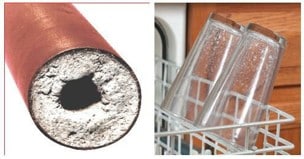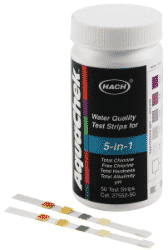Water Hardness Map
HOME > US WATER HARDNESS MAP

When you go to the doctor, do you walk in and tell the doctor you aren’t feeling well and without examining you, he writes a prescription for high blood pressure and sends you on your way? Or do you take your car in for service, and they just put new brakes on then send you on your way? No seems silly, right? Yet, this is how the water filtration companies have approached resolving water treatment. Try one method, if that doesn’t work, then try something else and something else. This happens again and again, wasting thousands of dollars in the process.
Another issue with the water filtration industry addressing one issue by creating multiple issues. When your doctor prescribes medicine for high blood pressure and informs you it will cause nausea. Another medicine is prescribed to you for the nausea. Same with water filtration. Here are the issues:
Ion exchange (water softener):
Pro: No scale(Temporary Hardness)
Con: Adds salt to the water
Lower pH
Corrosion
Expensive
Phosphates:
Pro: Scale reduction
Con: Adds chemicals to the water
pH Swings
Calcium Phosphate scale
Reverse Osmosis (RO):
Pro: Removes contaminants
Scale reduction
Con: Removes minerals
Corrosion makes water acidic
Expensive (to make one gallon of RO water it takes 3 gallons of water)
Needs lots of space
Ultra Violet (UV):
Pro: Sterilizes water – killing any pathogenic bacteria, viruses and cysts
Con: Requires an electricity source to power the bulb (annual replacement)
Doesn’t remove chemicals or metals etc. from the water

Pro: Effective at removing contaminants and pathogenic bacteria
Inexpensive
Con: Time consuming / slow to filter
Not very effective at removing chlorine or minerals
Removes minerals
Oxidation / Reduction (KDF):
Pro: Great for removing chlorine – especially at high temperatures
Removes heavy metals, iron and hydrogen sulfide
Con: Requires regular backwashing (with hot water) to clean the filter
Does not filter against pesticides and cysts
Doesn’t remove Calcium Carbonate (CaCO3), the cause for scale formation
Hach 2755250 5 In 1 Water Quality Test Strips

5 in 1 test strips are great for quick, on-site evaluations of water quality with reliable results on every test. These multi-parameter test strips test for five water quality measurements on 1 strip.
Total Hardness (as CaCO3, 0-25 gpg and 0-425 mg/L)
Total Alkalinity (as CaCO3, 0-240 mg/L)
pH (6.2 – 8.4)
Total Chlorine (0-10 mg/L)
Chloramine levels not exceed 0.2 ppm. If the level is above 0.2 ppm, the corrosion process begins.
Washing dishes, glassware and silverware, can cause spots and an unsightly cloudy coating – even more so when cleaned in dishwashers because the minerals from hard water are released faster when in contact with the heat.
Lime scale build-up on faucets, water heaters and inside pipes eventually reduces water flow and, in extreme cases, puts water-using appliances out of service and clogs pipes. Lime scale has been known to increase energy bills up to 25% because of reduced efficiency of hot water heaters.
